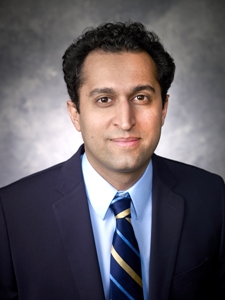Mar 6 2014
Dr. Majid Minary, an assistant professor of mechanical engineering at UT Dallas, has received funding to design high-performance materials inspired by bone.
 Dr. Majid Minary
Dr. Majid Minary
The Young Investigator Research Program (YIP) grant from the Air Force Office of Scientific Research (AFOSR) could eventually lead to the creation of a material that can reinforce itself at points of high stress for use in airplanes and other defense applications. The YIP program provides $360,000 over three years.
The YIP is open to scientists and engineers at research institutions across the United States who received their PhD in the last five years and who show exceptional ability and promise for conducting basic research.
“Materials and structures that self-reinforce, repair and heal are of importance for developing vehicles and machines for use in defense and security,” said Dr. Mario Rotea, head of the Department of Mechanical Engineering in the Erik Jonsson School of Engineering and Computer Science and holder of the Erik Jonsson Chair. “Nature uses evolution to develop these capabilities. Dr. Minary is one of a handful of young engineers and scientists who seek to uncover fundamental mechanisms of nature and combine them with engineering principles to develop these capabilities in man-made systems. This YIP award certifies Dr. Minary’s vision and skill set, and acknowledges the quality and applicability of his work to problems of relevance to the [Air Force].”
The AFOSR awarded 42 grants from more than 230 applicants who submitted proposals for YIP in this round of competition. Minary is one of two current Jonsson School faculty members to receive the award this year. Cybersecurity expert Dr. Zhiqiang Lin, assistant professor of computer science, also received a grant.
Human bone has been one of the major sources for bio-inspired design for man-made materials. It’s been known for decades that human bone has the ability to remodel itself. For example, bone in the dominant arm of a tennis player often weighs more than bone in the other arm, and medical clinicians often prescribe weight-bearing exercises to heal fractured bones.
What’s less clear are the fundamental mechanisms behind the remodeling. Based on his prior research, Minary will investigate the piezoelectricity (how pressure forms electric charges) of the fibers of collagen inside bones. Collagen is the most abundant protein in the human body — it contributes to smooth skin and is a building block for muscles, tendons and bones.
“My prior work showed that it is actually the collagen fibers in bone that have the piezoelectric property that allows bone to rebuild itself,” said Minary, also a member of the Alan G. MacDiarmid NanoTech Institute at UT Dallas. “Now we want to see if we can learn from this property and make synthetic materials that act in similar ways as the collagen fibers.”
Researchers are increasingly turning to biometrics to develop synthetic materials.
“Nature has evolved over billions of years to provide the best performance,” he said. “If we can incorporate this piezoelectric property of collagen fibers into materials on airplanes, we may be able to allow those areas under maximum stress to reinforce themselves.”
The research could also have implications in osteoporosis, a disease that occurs when bones decrease in mass and become more likely to fracture.
Minary’s investigation may include collaborations with other UT Dallas faculty members: Dr. Dong Qian, an associate professor of mechanical engineering and an expert in multi-scale computational modeling dynamics; Dr. Ray Baughman, Robert A. Welch Distinguished Chair in Chemistry and director of the NanoTech Institute; and Dr. Orlando Auciello, endowed chair professor of materials science and engineering.
“UT Dallas has generously provided the advanced equipment needed to pursue innovative and high-tech research through programs such as the AFOSR YIP,” said Minary, who joined UT Dallas in 2012. “With the other bio- and nano-experts already here, I am in a unique position to hopefully mimic nature’s optimization to design synthetic materials that are as strong and remarkable as bone, or even stronger.”